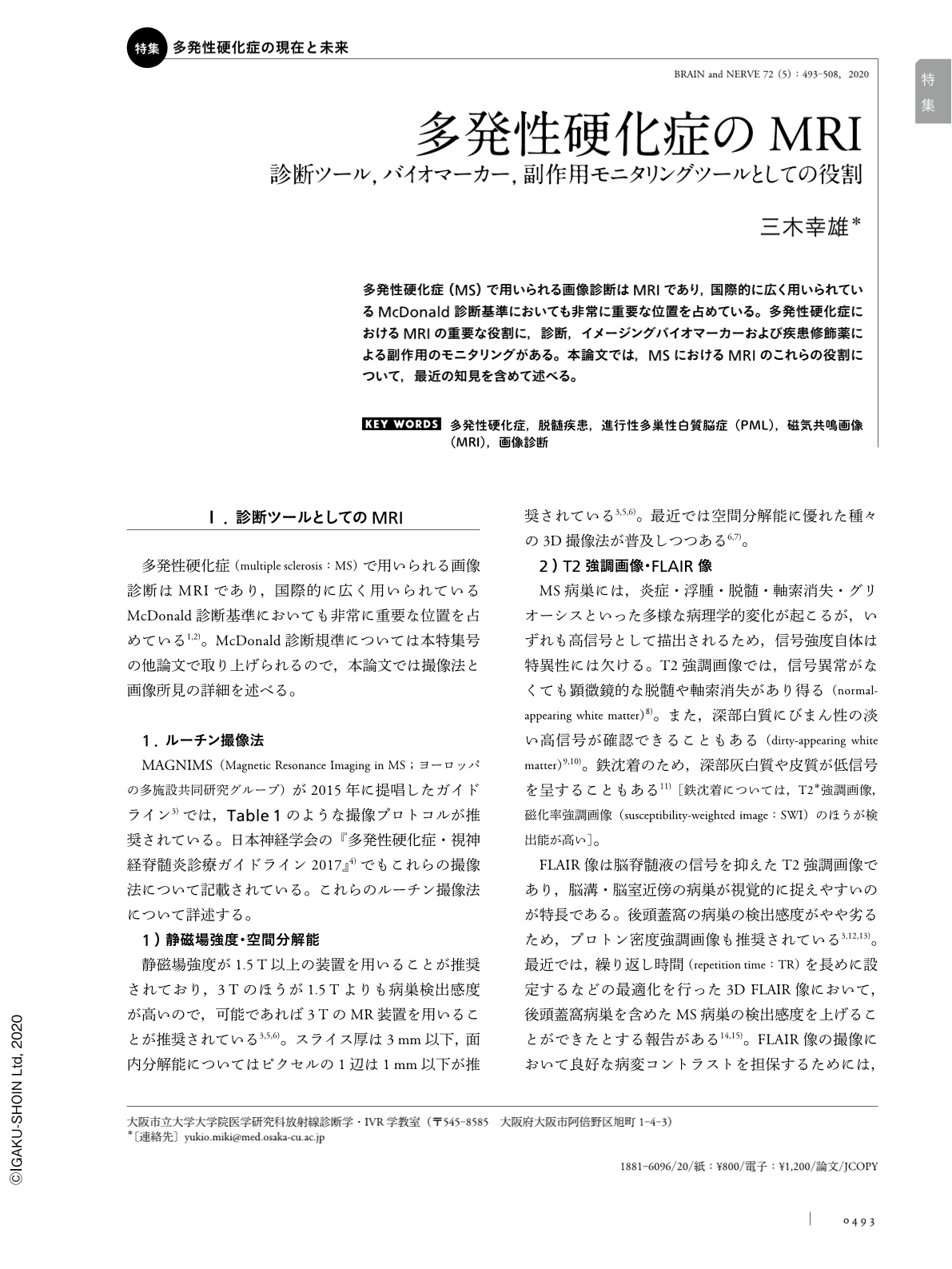Japanese
English
- 有料閲覧
- Abstract 文献概要
- 1ページ目 Look Inside
- 参考文献 Reference
- サイト内被引用 Cited by
多発性硬化症(MS)で用いられる画像診断はMRIであり,国際的に広く用いられているMcDonald診断基準においても非常に重要な位置を占めている。多発性硬化症におけるMRIの重要な役割に,診断,イメージングバイオマーカーおよび疾患修飾薬による副作用のモニタリングがある。本論文では,MSにおけるMRIのこれらの役割について,最近の知見を含めて述べる。
Abstract
Magnetic resonance imaging (MRI) is the imaging modality of choice for patients with multiple sclerosis (MS). The roles of MRI in MS include diagnosis, imaging biomarkers, and safety monitoring for patients receiving disease-modifying drugs (DMDs). In terms of diagnosis, MRI plays a pivotal role in the international diagnosis criteria (McDonald criteria). MRI is also useful for differential diagnosis. The rate of MS misdiagnosis might be as high as 10%, and careful interpretation of MRI may reduce rates of misdiagnosis. Quantified MRI data have been widely used as primary and secondary outcomes in clinical trials of DMDs. MRI is also a powerful tool for monitoring the efficacy of DMDs in individual patients (i.e., determination of responder status for each drug). MRI assists with early detection of the side effects of DMDs. MRI can detect lesions of natalizumab-induced progressive multifocal leukoencephalopathy (PML) before symptoms occur. This review summarizes our current understanding of the utility of MRI in the diagnosis and treatment of patients with MS.

Copyright © 2020, Igaku-Shoin Ltd. All rights reserved.


